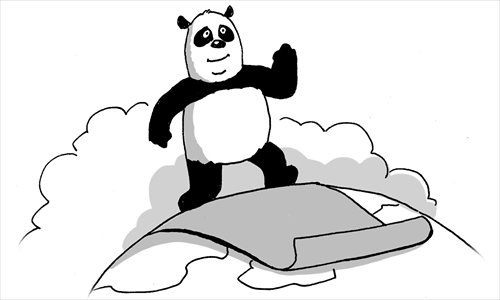


Illustration: Liu Rui/GT
Recent days have witnessed dramatic ups and downs about Beijing's involvement in the construction of the Kra Canal in Thailand that will cut through southern Thailand. However, according to an investigative report by the Global Times, both the Chinese and Thai authorities have denied any government-backed connections with the much-hyped "strategic project."
This reminds me of the Nicaragua Canal launched by a mysterious private Chinese company where a ground-breaking ceremony was held recently. But its prospects remain obscure.
Despite the long distance between the two, they have one thing in common. The Kra Canal project is said to enable ships to bypass the Malacca Strait under the control of the US and Singapore and improve China's strategic position. And constructing the Nicaragua Canal was described as being able to strategically balance the US-controlled Panama Canal and strengthen China's competitiveness in global oceanic dominance.
Some similar projects are also viewed through a "strategic" lens, for instance, the proposed Trans-Andean railways linking the Atlantic and Pacific Oceans. Analysts claim that when the railroad is finished, Brazil's iron ore will bypass the Panama Canal and be transported directly to ports in Peru by railway, where they will be shipped to China. The reality is that Brazil's exports of iron ores to China do not pass through the Panama Canal.
These strategic conjectures describe China's overseas mega projects like large ports, railways and oil-gas pipelines as strategic chess pieces deployed to upset the possible blockade by the US. Many of these speculations have business-driven purposes. However, they have prevented people from having a thorough understanding of the China-US relationship and China's going global strategy.
The current world order has been maintained by the US while most strategic routes are also in the hands of Americans. China has to prepare for possible changes in the future due to its resource demands.
However, multiple preparations don't mean China has to seize control of all these routes. China's global strategy is not designed to break a hypothetical US blockade.
Chinese leaders stress win-win development. China's strength rests on its capability and determination to embrace the world with an open mind and address disputes through integration.
With regard to the "One Belt, One Road" initiative, Chinese leaders have placed great emphasis on the integration of stakeholders along the path in a bid to build mutually beneficial and win-win relationships.
Power and strength are required to maintain integration, but the growth of power and strength is intended to optimize the process of integration instead of protecting one's own interests by occupation or control, as traditional colonists and hegemons did.
Since reform and opening-up, China has benefited enormously from its exchanges with the US. Why can China do this? The answer is that the reform and opening-up strategy, defined by former leader Deng Xiaoping, deals with China-US relations through integration instead of confrontation.
China has faced US resistance on multiple political and economic fronts during its development, most of which, however, has been properly obviated. Those unaddressed problems can no longer reverse the bilateral relationship. The facts show that China has been right in its strategic handling.
We are in a time of global competition but also global integration. Any attempt to contain or isolate China has never worked out, so how will it do in the future?
The author is a senior editor with People's Daily. He is now stationed in Brazil. dinggang@globaltimes.com.cn. Follow him on Twitter at @dinggangchina
 J-11 fighters in air exercise
J-11 fighters in air exercise Beauties dancing on the rings
Beauties dancing on the rings Attendants-to-be join Mr. & Miss Campus Contest
Attendants-to-be join Mr. & Miss Campus Contest Beijing's toughest anti-smoking law takes effect
Beijing's toughest anti-smoking law takes effect Family lives in cave for about 50 years in SW China
Family lives in cave for about 50 years in SW China PLA soldiers operating vehicle-mounted guns in drill
PLA soldiers operating vehicle-mounted guns in drill Blind carpenter in E China's Jiangxi
Blind carpenter in E China's Jiangxi China hosts overseas disaster relief exercise for the first time
China hosts overseas disaster relief exercise for the first time 20 pairs of twins who will become flight attendants in Sichuan
20 pairs of twins who will become flight attendants in Sichuan Obama is sowing discontent in S.China Sea
Obama is sowing discontent in S.China Sea Rescuers work through night to reach cruise ship survivors
Rescuers work through night to reach cruise ship survivors Driving through limbo
Driving through limbo Facing down MERS
Facing down MERSDay|Week